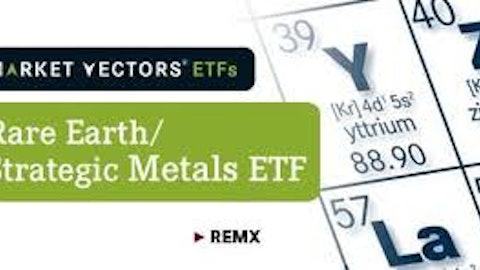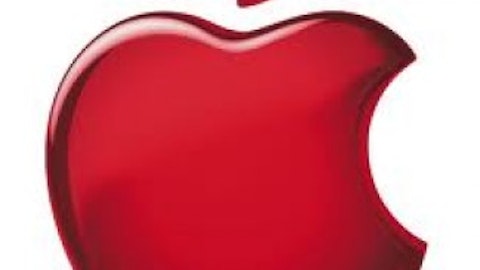
Rare Earth Metals Falling Out Of Favor
For simplicity’s sake, rare earth and strategic metalsare naturally-occurring elements that are found in extremely small quantities. Despite the limited supply, their use can be found in a wide range of products, including plasma televisions, wind turbines, music players, iPads and even hybrid cars. Currently, there are roughly 17 rare earth metals, the most popular being cerium and neodynium oxide, lanthanum and scandium. China and the resource-rich Australia have come to dominate this niche market over the years, accounting for a large portion of supply in the rare earth metals industry.
At the industry’s peak, prices of certain rare earths metals surged more than tenfold in less than a year, encouraging many mining companies to allocate significant amounts of resources to fund small sideline operations. In 2010, the world’s largest producer, China, made it even more appealing for miners to dive into the world of rare earth metals after the country began sharply restricting exports on the commodity. Sure enough, mining companies around the globe began to ramp up production, leading to what many believe is the China-induced supply gut we see today. Meanwhile, demand for these rare commodities have been on the decline as of late, with manufacturers finding more and more alternatives to rare earth components. Again, we see basic economics take place; more than plentiful supplies combined with lower demand causes prices to take a sharp nosedive [see also A Deeper Look At Australia’s Commodity Industry].
And because of the complex processing methods and costly expenditures inherent in this niche industry, the recent free fall of rare earth prices has forced many companies to shut down their rare earth ventures. Instead, many are now choosing to focus on more popular metals, namely gold, silver and copper, whose performances have also been significantly impacted by rising operational costs and the global economic slowdown.
Time To Buy?
Though the outlook for the rare earths/strategic metals industry is rather bleak, there are those who believe that the commodity still presents a viable and potentially lucrative investment once prices make a turnaround and gain traction. Whether your looking to buy in on the dip, or to completely avoid this niche corner of the commodity market, we outlines several rare earths investments that you may want to keep a close eye on [see also Time To Buy Coal?]:
- Market Vectors Rare Earth Strat Met (NYSEARCA:REMX): This ETF is currently the only exchange-traded product on the market that provides targeted exposure to the rare earths space. Given the commodity’s current market environment, it is perhaps not surprising to see small and mid-cap stocks from Australia, China and the United States dominate REMX’s portfolio.
- Molycorp Inc (NYSE:MCP): Headquartered in Greenwood Village, Colorado, this industry heavyweight and newcomer is one of the biggest names in the rare earth oxide industry. It is important to note, however, that the company is currently under an SEC investigations relating to its disclosures.
- Iluka Resources Limited (ASX:ILU): This Australian company focuses on the exploration and development of zicron, titanium dioxide products and ilmenite. Since being founded in 1954, Iluka has grown to be a $3.38 billion company, and its current EPS comes in around 1.60.
- Hunan Nonferrous Metals Corporation Ltd. (HKG:2626): Despite opening its doors only seven years ago, this Chinese behemoth has blossomed into a $8.88 billion company, with its shares exchanging hands over 3.5 million times a day. For those looking for a more diversified play on the sector, Hunan may be a better option as the company produces a wide array of metals including zinc, antimony, lead, silver, indium, tantalum and niobium.
This article was originally written by Daniela Pylypczak, and posted on CommodityHQ.





